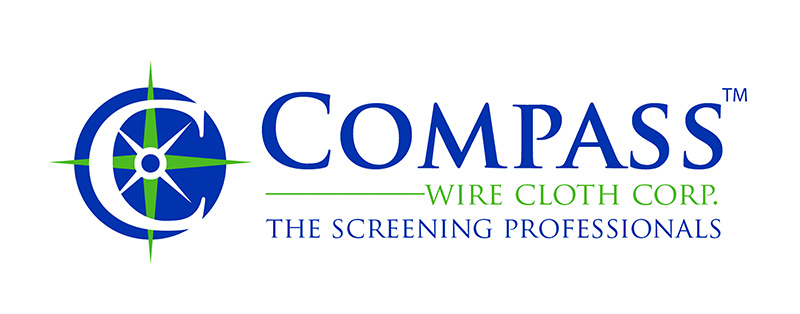WIRE CLOTH ALLOYS AND TERMINOLGY
Alloys
Stainless Steel 300 Series
- Type 304 Stainless Steel – The most common of the 300 Series and most widely used in wire cloth. If no stainless alloy is specified, Type 304 is acceptable. Contains 18% chromium and 8% nickel. Type 302 is basically the same as Type 304 with higher carbon content.
- Type 316 Stainless Steel – The same content as Type 304 with the addition of 2% minimum of Molybdenum. This addition allows for increased resistance to corrosion. It also provides increased strength at high temperatures.
- Types 304L and Type 316L – These types contain the same analyses as above with a lower carbon content which complements welding.
Stainless Steel 400 Series
- Type 410 Stainless Steel – The basic alloy of this group and is heat treatable and magnetic. Used where mild corrosive conditions are present. It is a straight Chromium alloy without Nickel.
- Type 430 Stainless Steel – The most common of the 400 Series and most widely used in wire cloth. It is a straight Chromium alloy without Nickel which allows a high degree of resistance to corrosion and oxidation. This alloy is magnetic and is not heat treatable.
Other Alloys
- Nickel 200 – Used for certain food products and where corrosion resistance is high priority. It is also specified for high temperature applications.
- Monel Alloy 400 – A high Nickel Copper alloy and is used for corrosion resistant applications. It has the strength of mild steel and will not corrode in many industrial applications.
- Hastelloy Alloy A, B, C – Used for severe conditions where either extreme heat or high corrosive conditions are present.
- Carpenter No. 20 – Not normally used for high temperature applications but has good corrosion resistance.
- High Carbon Steel – offers better response to heat treatment and has a longer service life than medium-carbon steel. Typically has high abrasive resistance.
- Aluminum 5056 – Containing magnesium, manganese and chromium. Has good corrosion resistance as well as excellent welding properties. It is not heat treatable but is strong and has high formability.
- Aluminum 6061 – This alloy has good corrosion resistance and excellent formability complemented by good strength properties. It is a heat treatable, and the most common type used in wire cloth.
- Copper – Widely used in wire cloth for many industrial applications due to its corrosion resistance, formability, strength and electrical conductivity.
- Common Bronze – A high copper alloy used where the corrosion resistance required is above the capability of brass.
- Phosphor Bronze – A high copper alloy which has proved to be very valuable in a wide range of filtering problems. It is strong and maintains a superior resistance to fatigue.
Perforated Metals
- Gauge – A number associated with industry standard sheet metal thicknesses.
- Margins – Unperforated areas along the edges of the sheet or coil; are usually specified for handling purposes.
- Staggered Pattern – Holes in successive rows are staggered so that there is equal spacing between all holes.
- Straight Pattern – Holes are in straight rows in both directions.
- Thickness – The thickness of a particular gauge of sheet metal is a function of the gauge and the type of material and is usually specified in decimal parts of an inch. Note that the thickness of different metals with the same gauge may be different.
Not sure which alloy to use?
Our team will help you choose the right alloy for your material and process.
Reach out today at 800-257-5241 or contact us below
